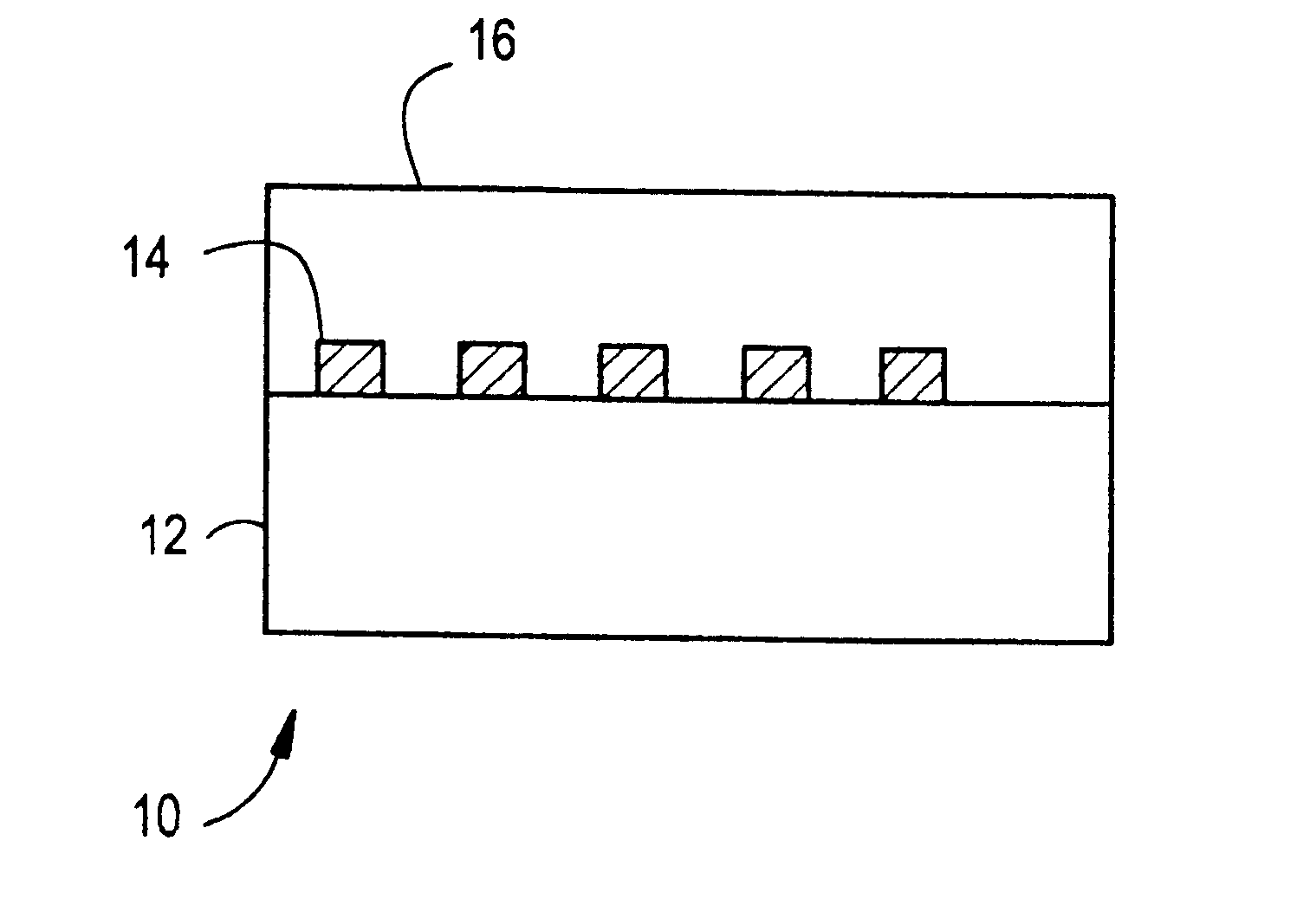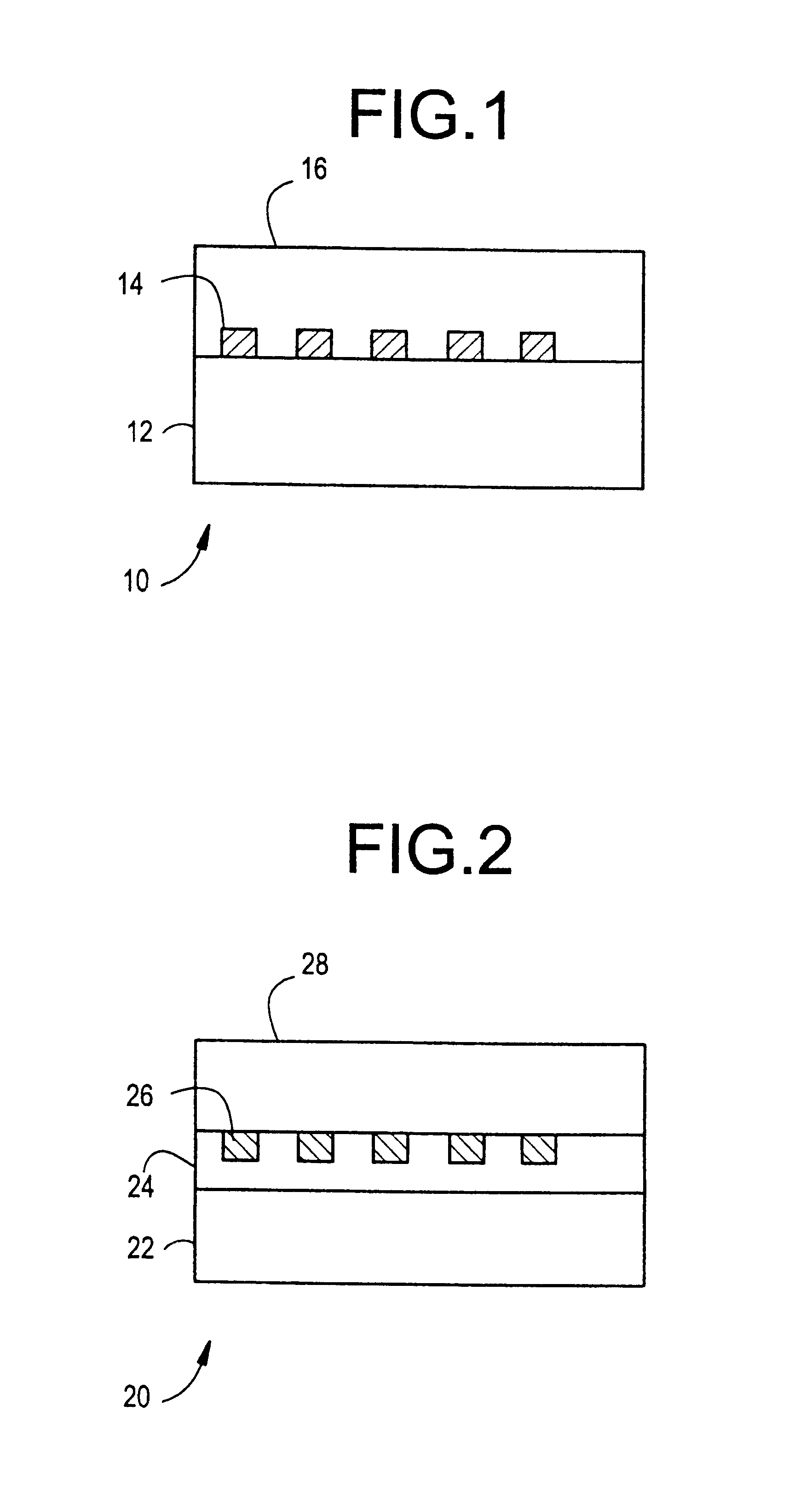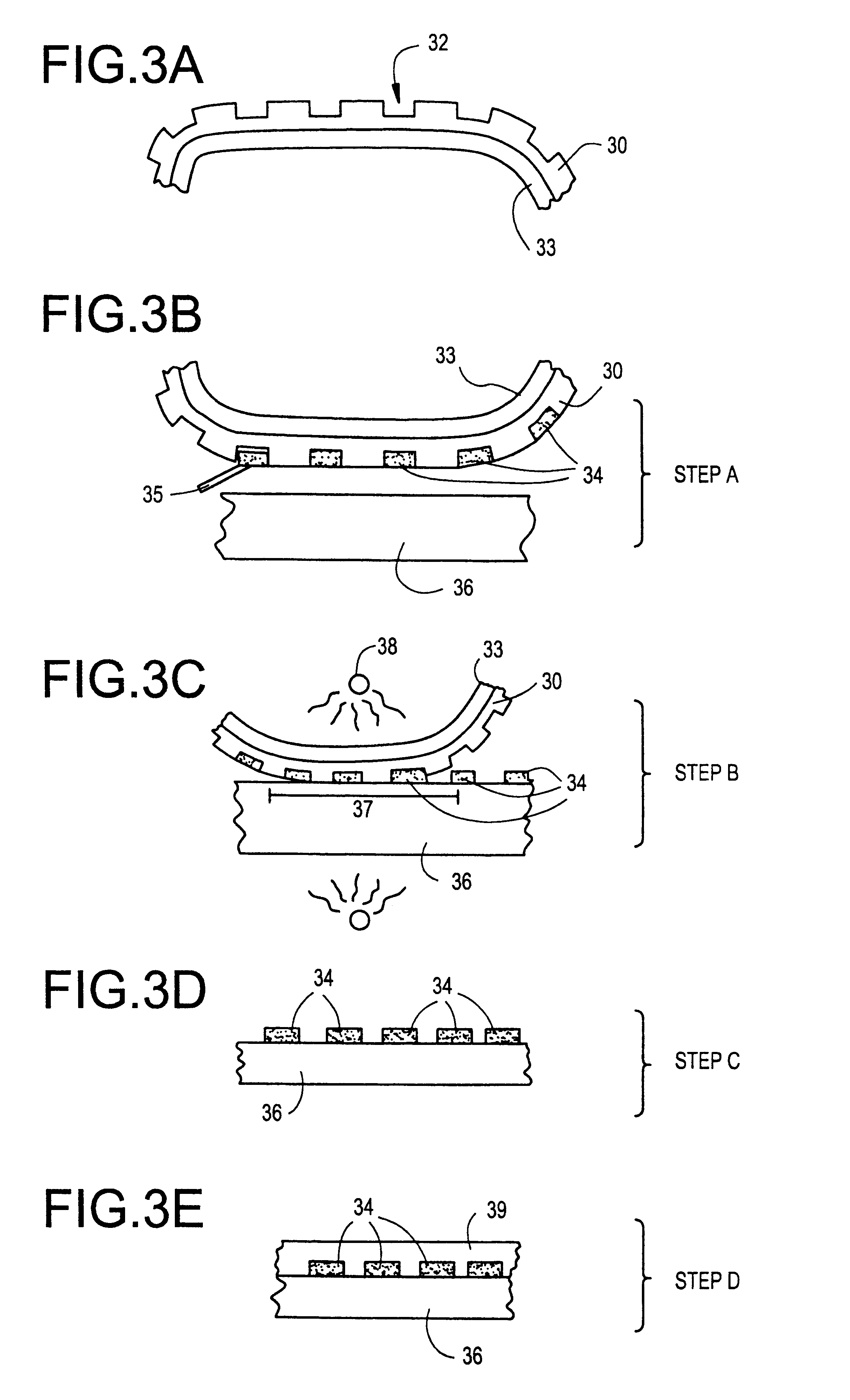Hybrid organic-inorganic planar optical waveguide device
a planar optical waveguide and organic inorganic technology, applied in the direction of instruments, manufacturing tools, other domestic articles, etc., can solve the problems of long deposition time, high cost of all process steps, and long deposition time, so as to minimize the stress field and reduce the effect of stress induced polarization
- Summary
- Abstract
- Description
- Claims
- Application Information
AI Technical Summary
Benefits of technology
Problems solved by technology
Method used
Image
Examples
Embodiment Construction
Used to Form Planar Optical Waveguide Devices
The invention is further described in connection with the following specific examples.
One suitable material for this invention is a sol-gel based silsesquioxane. The material is made from a multicomponent mixture of alkyl- and arylalkoxysilanes, fluoride, and water.
C.1 Synthetic Preparation I
The following describes a process for forming a core or cladding composition starting from a core or cladding composition precursor material.
The preparation is based on a 0.03 moles of silicon formulation with 8 mole % equivalent PDMS (polydimethylsiloxane), 73% MTES (methyltriethoxysilane) and 19% PTES (phenyltriethoxysilane). This will provide a material with an index of refraction of about 1.4565 at 632 nm (clad formulation). The composition for a core index (1.465) is given in {brackets}.
HF and PTES are mixed together in a closed nalgene vessel. The mixture is then heated in a 75.degree. C. water bath for 15 to 30 minutes. This step pre-hydrolyzes...
PUM
| Property | Measurement | Unit |
|---|---|---|
| thicknesses | aaaaa | aaaaa |
| width | aaaaa | aaaaa |
| degree of polymerization | aaaaa | aaaaa |
Abstract
Description
Claims
Application Information
 Login to View More
Login to View More - R&D
- Intellectual Property
- Life Sciences
- Materials
- Tech Scout
- Unparalleled Data Quality
- Higher Quality Content
- 60% Fewer Hallucinations
Browse by: Latest US Patents, China's latest patents, Technical Efficacy Thesaurus, Application Domain, Technology Topic, Popular Technical Reports.
© 2025 PatSnap. All rights reserved.Legal|Privacy policy|Modern Slavery Act Transparency Statement|Sitemap|About US| Contact US: help@patsnap.com



